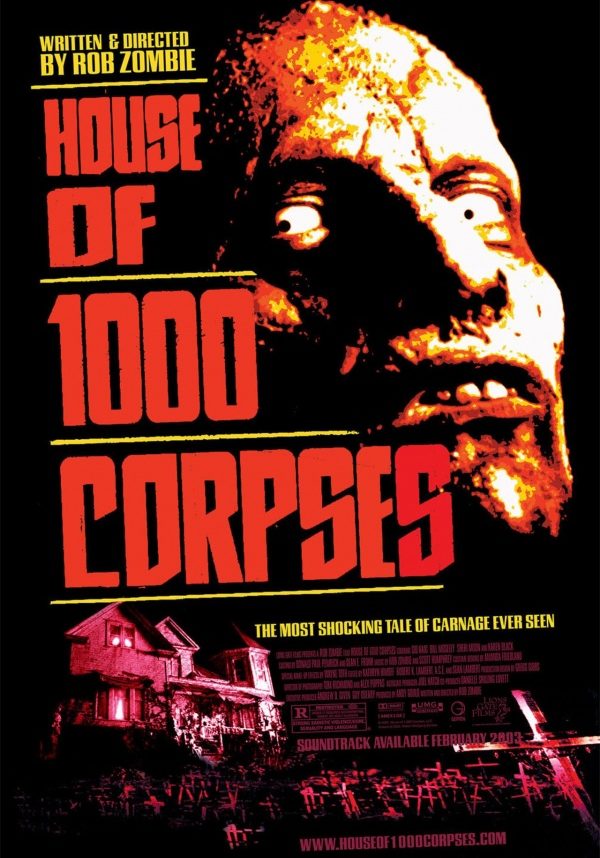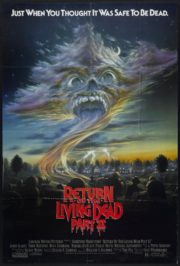“A Nightmare Carved from American Gothic”: An Ode to the Macabre
“Hope you like what you see!” – a line that perfectly encapsulates the audacious spirit of Rob Zombie’s directorial debut, House of 1000 Corpses (2003). As the curtain rises on this gruesome spectacle, it sets viewers down a spiraling descent into madness alongside two young couples in search of offbeat roadside attractions. Their pursuit of the macabre leads them to the Firefly family, whose house bears the charnel perfume of horror far beyond their wildest dread.
Atmospheric Alchemy: Crafting Terror from the Ground Up
Zombie’s foray into the horror landscape is a phantasmagoric collage of dread. The atmosphere carries an unsettling mix: part carnivalesque romp, part horrific slaughterhouse. Rather than relying solely on the typical mechanisms of suspense, Zombie commits to a relentless assault on the senses with lurid visuals and a grimy sense of foreboding. You can almost feel the oppressive weight of the film’s atmosphere, thick like the humid air of its rural setting.
The director cleverly layers tension by juxtaposing the bizarre against the banal, nudging the viewer from discomfort to outright panic. There’s a certain psychedelic flair to horror here, which is markedly different from the traditional slow burn of golden-era classics, or the startling jumps of modern chillers.
Through the Blood-Splattered Lens: Cinematography and Visuals
The film’s aesthetics are a twisted homage to 1970s horror, with grainy film quality and a color palette reminiscent of a carnival from hell. Zombie’s camera work—abrupt angles, dizzying pans, and interspersed vintage footage—amplifies the surreal discomfort. Special effects, though not always seamless, enhance the gory tableau. Particularly, the use of practical effects pays tribute to the ancestors of slasher cinema, adding a tangible rawness to each scene.
The soundscape is equally instrumental in conjuring horrors, with outlandish sound effects and a sound track that veers into Southern Gothic territory, raising the unsettling atmosphere to a crescendo. Certainly, it’s those moments when the music gives way to silence, to chilling whispers or to the sickening sound of metal through flesh, that the horror truly comes alive.
The Sinister Ensemble: Characters and Performances
The Firefly clan, portrayed with gleeful depravity, brings to life a tableau of terror that questions the viewer’s threshold for the extreme. The characters oscillate between cartoonishly demented and captivatingly sinister, a dichotomy that challenges believability at times yet works within the film’s hyper-real nightmare.
Sid Haig’s Captain Spaulding is the standout, masterfully walking the line between jester and demon in a performance that gives the film a beating, if black, heart. The rest of the cast delivers with varied success, sometimes succumbing to the challenge of portraying characters within such an intentionally over-the-top production, though they all contribute to the pervasive atmosphere of dread.
Scaring Techniques: Tapping into Primitive Fears
Moving onto the horror elements themselves, the movie is an amalgam of subgenres. Psychological terror plays second fiddle to a symphony of body horror and gore, with a particular penchant for operatic bloodletting. While the film includes jump scares, its true horror lies in the lingering aftertaste of its most grisly visuals, tapping into a primal repulsion that’s hard to shake.
Rob Zombie’s fascination with serial killers and American folk devils equates to a narrative brimming with twisted traditions. The director is less interested in reinventing the horror wheel and more invested in spinning it until the viewer is dizzy with unease.
Final Verdict: “To Hell and Back”
As a piece of horror cinema, House of 1000 Corpses is a polarizing affair. Surely, it will not suit every palate; yet for those disposed to the grotesque artistry of spatter films, it’s a riotous celebration of genre conventions. It is not groundbreaking, but it is uncompromising in its vision and memorable for its relentless commitment to shock.
Specifically, seasoned horror aficionados and fans of grindhouse movies will find a nostalgic indulgence in its excesses. Others, particularly those with aversions to graphic content, should perhaps look elsewhere. Make no mistake, the film is saturated with triggers of violence and terror, prompting a caution for the faint of heart.
Comparing House of 1000 Corpses to the greater horror canon, it echoes the perverse family dynamics of The Texas Chain Saw Massacre with sprinklings of The Rocky Horror Picture Show‘s anarchic energy. It’s a gritty, unruly horror pastiche that transcends its flaws through sheer force of will.
While Zombie’s first filmic foray may be rough around the edges, its firestorm of fears ultimately leaves an indelible mark on the genre’s lurid tapestry. It’s a carnival ride only some will want to board, but for those that do, it’s one that spins relentlessly into the night, monstrous and unapologetically loud.




